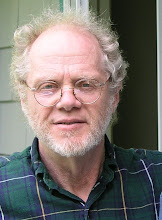The quote below is from an article in today's Times. It contains all sorts of numbers but no real attempt to assess their significance or even to relate them with each other. Surely we can expect better reporting and editing. Even better, in the online edition (for which I now pay), there could easily be links to glossaries and explanations. As a mathematician I understand, say, half-life, but I don't remember -- if I ever knew -- how many sieverts or sieverts per hour, or becquerels per liter ( in 4 to 8 inches of water spread out over how many square meters or feet or whatever) I should be concerned about. My H.S. science and writing teachers would have taken a very dim view of this mess of mixed metaphors and units.
"Plant workers discovered a crack about eight inches wide in the maintenance pit, which lies between the No. 2 Reactor and the sea and holds cables used to power seawater pumps, Japan’s nuclear regulator said.
The space directly above the water leaking into the sea had a radiation reading of more than 1,000 millisieverts per hour, Mr. Nishiyama said. Tests of the water within the pit later showed the presence of one million becquerels per liter of iodine 131, a radioactive substance. However, iodine 131 has a half life of about eight days.
Mr. Nishiyama also said that higher than normal levels of radioactive materials were detected about 25 miles south of the Fukushima plant, much farther than had previously been reported.
At the time the leak was discovered, the deep pit was filled with four to eight inches of contaminated water, according to Tokyo Electric. But it was impossible to immediately judge how much water had escaped and over how long a period of time."

Even after looking at Wikipedia, i still cannot get a grip on the significance of the radioactivity in the Times article. For your reading pleasure, here it is. By the way my favorite unit of measurement is furlongs per fortnight.
ReplyDelete"The becquerel (symbol Bq) (pronounced: be-ˈkrel) is the SI-derived unit of radioactivity. One Bq is defined as the activity of a quantity of radioactive material in which one nucleus decays per second. The Bq unit is therefore equivalent to s−1. The becquerel is named for Henri Becquerel, who shared a Nobel Prize with Pierre and Marie Curie for their work in discovering radioactivity.
In a fixed mass of radioactive material, the number of becquerels changes with time. Therefore, a sample radioactive decay rate is always stated with a timestamp for short-lived isotopes, sometimes after adjustment to some specific date of interest (in the past or in the future). For example, one might quote a ten-day adjusted figure, that is, the amount of radioactivity that will still be present ten days in the future. This can de-emphasize short-lived isotopes. The average human experiences 4400 becquerels from decaying potassium within the body. [1]
SI uses the becquerel rather than the second for the unit of activity measure to avoid dangerous mistakes: a measurement in becquerels is proportional to activity, and thus a more dangerous source of radiation gives a higher reading. A measurement in seconds is inversely proportional."